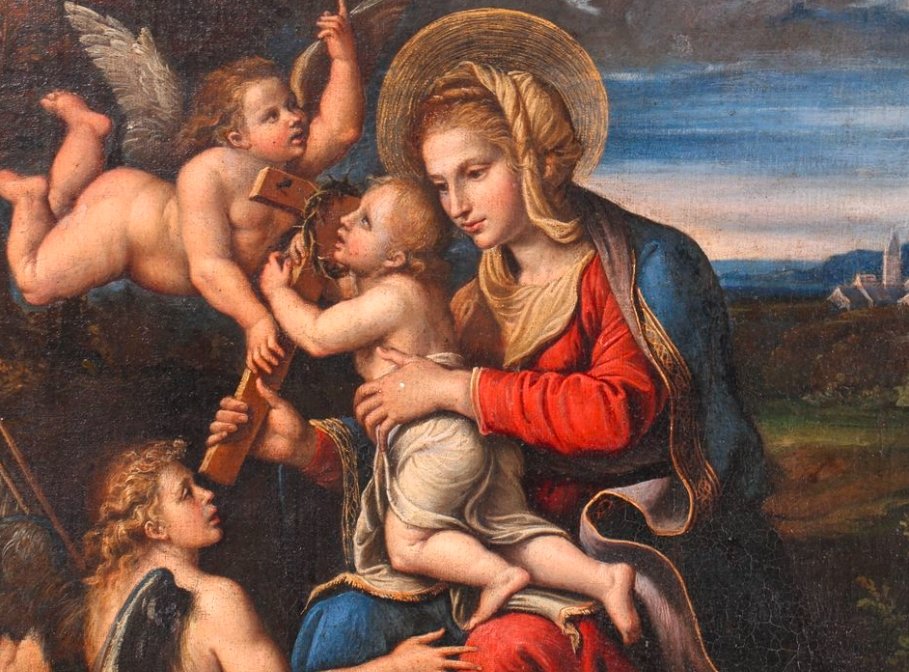In a quaint kitchen in northern France, an elderly woman unwittingly harbored a treasure—a small 13th-century panel painting that would rewrite art history. This unassuming artwork, believed to be a mere “knock-off,” turned out to be an original creation by the renowned Renaissance painter Cenni di Pepo, better known as Cimabue. The painting, titled “The Mocking of Christ,” is part of a three-paneled polyptych that depicts various stages of the Passion of Christ.
The Artwork Unveiled
1. The Mocking of Christ
Cimabue’s “The Mocking of Christ” captures a pivotal moment before Jesus’s crucifixion. The scene unfolds with Christ standing at the center, clad in a red robe and blue cloak. His eyes remain uncovered, adhering to the Byzantine style. In contrast to Northern European depictions, where Christ would be seated and blindfolded, Cimabue’s portrayal emphasizes impassivity and sorrow. Surrounding him are shorter figures—men who strike him with rods, a sheathed sword, or their bare hands. One even reaches up to remove Christ’s halo. The background features Byzantine reverse perspective buildings against a luminous gold sky.
2. The Diptych of Devotion
“The Mocking of Christ” is part of a diptych, along with two other scenes by Cimabue. These panels form a cohesive narrative of Christ’s passion. The other identified works are “The Virgin and Child with Two Angels” (now housed in the National Gallery, London) and “The Flagellation of Christ” (in the Frick Collection, New York). Each panel shares stylistic similarities, showcasing Cimabue’s mastery of light, perspective, and facial expressions. Collectively, they mark a pivotal moment in art history—a shift from Byzantine tradition toward more naturalistic representations of events.

Challenges and Triumphs
1. The Journey to Recognition
Cimabue’s works are scarce, with only a dozen attributed to him. None bear the artist’s signature, making their identification a delicate task. “The Mocking of Christ” stands out not only for its subject matter but also for its technique. Despite its small scale, it employs the same crowd-rendering methods seen in Cimabue’s larger frescoes at Assisi.
2. Record-Breaking Auction
In October 2019, this unassuming panel shattered records when it sold at auction for €24 million, a remarkable feat for an artwork predating the 16th century. It marked the first time a Cimabue work had graced an auction house. Following an export ban, the Louvre acquired the masterpiece in 2023, securing its place in art history.
Cimabue’s “Mocking of Christ” reminds us that hidden treasures can emerge from unexpected corners. As we marvel at this Renaissance gem, we honor the artist’s legacy and the enduring power of art to transcend time and circumstance.













